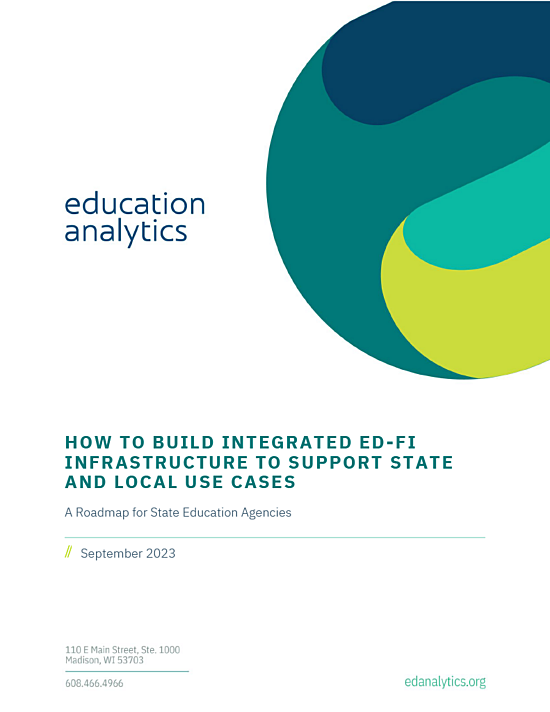How to Build Integrated Ed-Fi Infrastructure to Support State and Local Use Cases: A Roadmap for State Education Agencies
States across the country are grappling with the challenge of efficiently collecting and utilizing data to achieve their educational goals. To address this issue, many state education agencies (SEAs) have embarked on building data infrastructure based on interoperability, often opting for the Ed-Fi technology. Various models for Ed-Fi implementation are available, including the district model (within a single large district), regional data hub model (consortium of districts in the same state), state reporting model (statewide implementation for mandated state reporting), and the integrated model (collaboration among local, regional, and state education agencies). The integrated model stands out as it streamlines data collection, automates reporting, saves resources, fosters collaboration, enhances data quality, and supports a wide range of data use cases, making it an enticing choice for SEAs seeking to leverage Ed-Fi.
The integrated model, however, comes with its set of considerations, which are discussed in detail in this resource. The roadmap for implementing this model consists of five phases: Phase 1 involves pre-planning, Phase 2 focuses on planning, Phase 3 is the pilot phase, Phase 4 involves parallel testing, and Phase 5 leads to full-scale production. This roadmap serves as a comprehensive guide for states interested in adopting Ed-Fi infrastructure within an integrated model, with flexibility to expedite or extend phases based on specific circumstances.
